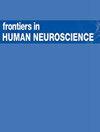情绪反应中的心理生理差异:感知失去联系的敏感性
IF 2.4
3区 医学
Q3 NEUROSCIENCES
引用次数: 0
摘要
情绪涉及自身与关注对象的关系;例如,悲伤是指对某事/某人感到悲伤。本研究考察的是感知到与自己失去联系时的情绪反应。有证据表明,欧洲人倾向于感知前景中的突出对象,而东亚人则更倾向于整体感知,考虑背景和对象之间的相互关系。我们研究了这种区别如何影响欧美人(EA)和美籍华人(CA)感知失去联系的敏感性。两组受试者都通过玩 "数码宝贝"(Cyberball)--一种抛球视频游戏--来体验失去联系的感觉,然后观看一部关于悲伤的电影片段。我们假设,当感知到失去联系时,EA 的心率(HR)在平均值附近的方差会增大。预测 CA 与对照组没有差异。我们还假设,从心率下降和呼吸窦性心律失常(RSA)增加的角度来看,EA 在观看电影片段的早期会感到更悲伤。我们共招募了 53 名受试者,其中 40 人为 EA(47.5% 为女性,年龄为 21.08 ± 1.94 岁),13 人为 CA(61.5% 为女性,年龄为 21.05 ± 1.74 岁);25 名受试者(19 名 EA,6 名 CA)接受了网络球 48 个球中的 2 个球,对照组接受了 10 个球。研究人员采集了心电图、呼吸和面部肌电图(fEMG)数据。网络球游戏中的结果显示,EA 相对于基线的心率变异(心率 SDc/b)在感知损失时呈上升趋势。与预测相反,CA 也显示出相对于基线较高的心率变异水平。HR SDc/b 的方差分析显示,时间和条件这两个因素的交互作用具有显著的统计学意义(p = 0.009)。然而,正如预测的那样,在实验条件下,EA 在悲伤片段开始的 30 至 60 秒内,心率降低,RSA 增加,这是悲伤时退缩的一种表现。fEMG 数据显示,EA 比 CA 提前 5.5 秒激活更高的峰值强度(增加 1.571 vs. 0.844)。然而,这一差异在统计学上并不显著。这些证据表明,即使受试者被告知球员是由计算机生成的,自动暴露于损失的增加也会导致两组受试者心率变异的增加。不过,这种影响对 EA 的影响更大,因为 EA 会提高受试者的唤醒度和对悲伤的敏感度。本文章由计算机程序翻译,如有差异,请以英文原文为准。
Psychophysiological distinctions in emotional responding: sensitivity to perceiving loss of connection
Emotion involves oneself in relation to a subject of attention; e.g., sadness is to be sad about something/someone. This study examined emotional responses to perceiving a loss of connection from oneself. Evidence suggests that Europeans tend to perceive salient objects in the foreground, while East Asians are more likely to perceive holistically, considering the interrelationships between the context and the object. We studied how this distinction affected European Americans’ (EA) and Chinese Americans’ (CA) sensitivity to perceiving the loss of connection. Both groups were exposed to loss by playing Cyberball, a ball-tossing video game, and then watched a film clip on grief. We hypothesized that EA would respond with increasing heart rate (HR) variance around the mean when perceiving loss. CA were predicted to show no difference from controls. We also hypothesized that EA would feel sadder, in terms of decreased HR and increased respiratory sinus arrhythmia (RSA), earlier during the film clip. In total, 53 subjects were recruited, of which 40 were EA (47.5% women, age 21.08 ± 1.94 years) and 13 were CA (61.5% women, age 21.05 ± 1.74 years); 25 subjects (19 EA, 6 CA) received 2 out of 48 balls tossed in Cyberball and the controls received 10. ECG, respiration, and facial electromyography (fEMG) data were acquired. The results during Cyberball showed that EA’s HR variance relative to baseline (HR SDc/b ) had an upward trend on perceiving loss. Contrary to prediction, CA also showed higher levels of HR variance relative to baseline. The ANOVA of HR SDc/b revealed that the interaction effect of two factors, time and condition, was statistically significant (p = 0.009). However, as predicted, EA in the experimental condition had decreased HR and increased RSA, a sign of withdrawal in sadness, 30 to 60 s into the sad clip. fEMG data at the corrugator muscle revealed that EA activated higher peak intensity 5.5 s earlier than CA (increased 1.571 vs. 0.844). This difference, however, was not statistically significant. The evidence suggests that increased exposure to loss automatically led to increased HR variance in both groups even when subjects were informed that players were computer-generated. However, the effect was stronger on EA to increase their arousal and sensitivity to grief thereafter.
求助全文
通过发布文献求助,成功后即可免费获取论文全文。
去求助
来源期刊

Frontiers in Human Neuroscience
医学-神经科学
CiteScore
4.70
自引率
6.90%
发文量
830
审稿时长
2-4 weeks
期刊介绍:
Frontiers in Human Neuroscience is a first-tier electronic journal devoted to understanding the brain mechanisms supporting cognitive and social behavior in humans, and how these mechanisms might be altered in disease states. The last 25 years have seen an explosive growth in both the methods and the theoretical constructs available to study the human brain. Advances in electrophysiological, neuroimaging, neuropsychological, psychophysical, neuropharmacological and computational approaches have provided key insights into the mechanisms of a broad range of human behaviors in both health and disease. Work in human neuroscience ranges from the cognitive domain, including areas such as memory, attention, language and perception to the social domain, with this last subject addressing topics, such as interpersonal interactions, social discourse and emotional regulation. How these processes unfold during development, mature in adulthood and often decline in aging, and how they are altered in a host of developmental, neurological and psychiatric disorders, has become increasingly amenable to human neuroscience research approaches. Work in human neuroscience has influenced many areas of inquiry ranging from social and cognitive psychology to economics, law and public policy. Accordingly, our journal will provide a forum for human research spanning all areas of human cognitive, social, developmental and translational neuroscience using any research approach.
 求助内容:
求助内容: 应助结果提醒方式:
应助结果提醒方式:


